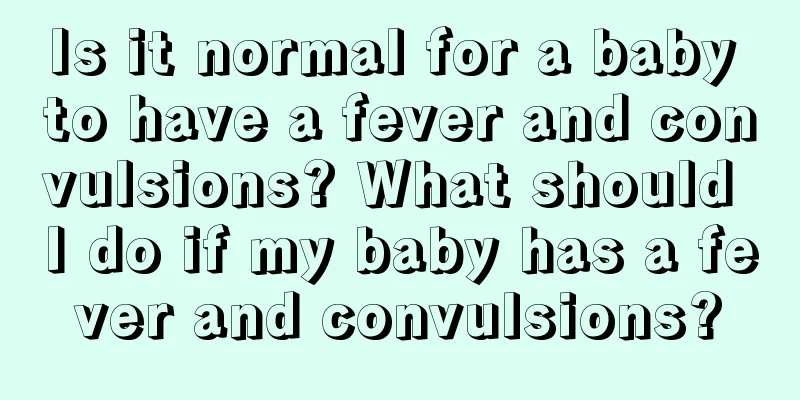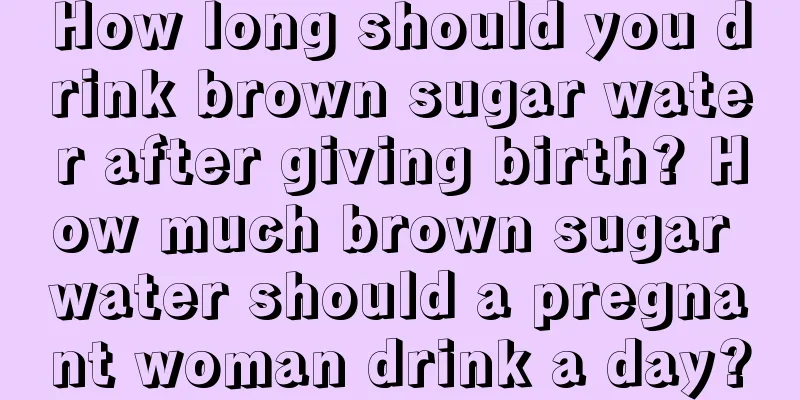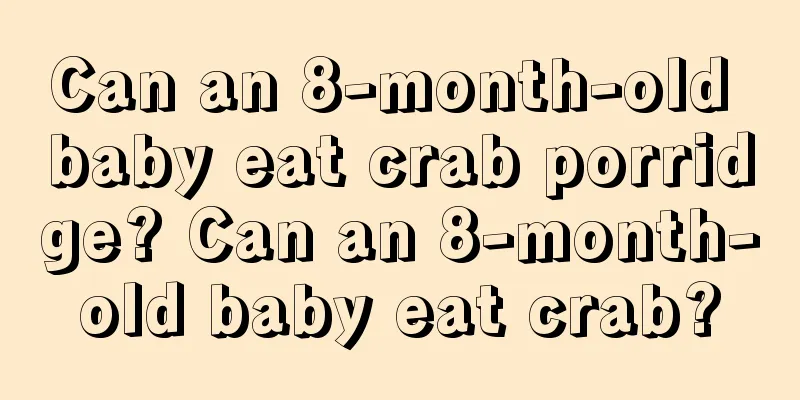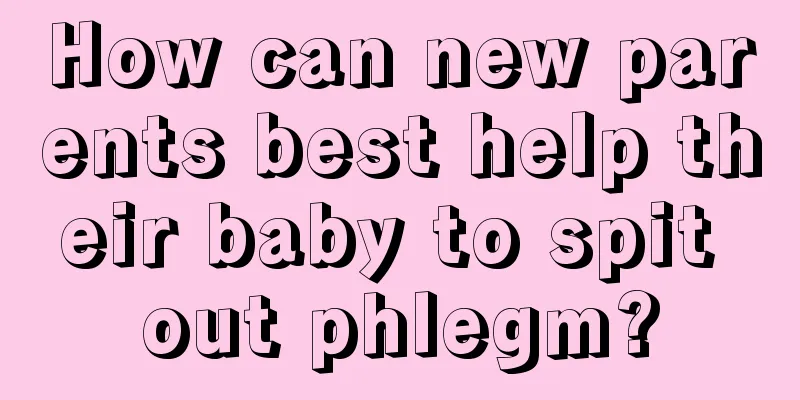Is it normal for a baby to have a fever and convulsions? What should I do if my baby has a fever and convulsions?

|
When babies have a high fever, they twitch, which scares mothers. So is it normal for babies to have a fever and twitch? What should I do if my baby has a fever and twitch? Don't worry, mothers, the editor of No. 5 website will give you some tips~ Don't underestimate the baby's illness, mothers must be cautious~ Is it normal for a baby to have a fever and convulsions?Any sudden high fever in young children may cause febrile convulsions, manifested as unconsciousness and twitching from time to time, but the children often play as usual during the relief period after the convulsion, and have no other neurological symptoms. The incidence rate is about 2-8%, which is the most common cause of childhood convulsions. Among various types of childhood convulsions, febrile convulsions account for about 30%, which are more common in children aged 6 months to 3 years. Because the brain of children at this stage is not fully developed and the inhibition ability is poor, even weak stimulation can cause strong excitement and diffusion in the brain, leading to abnormal discharge of nerve cells and convulsions. In addition to age factors, the cause of the disease is also genetic. About 40-58% of the close relatives of the children have a history of febrile convulsions or epilepsy. Occasional febrile convulsions generally do not leave sequelae. However, repeated febrile convulsions can cause varying degrees of damage to the brain. According to statistics, about 20% of children will develop epilepsy in the future, most of whom have long-lasting febrile convulsions, frequent attacks, and drowsiness after the attack. Some children also have convulsions when the body temperature is 38°C, and some children have a family history of epilepsy. Most of these children develop epilepsy within 10 years after the first febrile convulsion. It is worth noting that about 13.6% of children with febrile convulsions may have varying degrees of intellectual disability in the future, which should be taken seriously by us. Therefore, effectively controlling the onset of convulsions in infancy may effectively reduce the occurrence of sequelae. For children who have more than 5 seizures within 1 year, each seizure lasts more than 20 minutes, and the EEG remains abnormal 1 week after the seizure, or have a family history of epilepsy, clinical follow-up should be strengthened for preventive treatment. Phenobarbital can be used, 5 mg per kilogram of body weight per day, divided into 3 oral doses, and taken for 2 years or until 4 to 6 years old. In addition, physical cooling is very important. When a child has a high fever, 30% alcohol bath or ice pack can be used to cool the forehead, and antipyretic treatment can be given at the same time to prevent seizures. What to do if you have a fever and convulsionsIf a child has a high fever and convulsions at home, parents can take the following measures: 1. If the convulsion lasts more than 4 minutes, you should go to the hospital immediately; if it is less than 4 minutes, you can wait until the child feels better and rests for a while before going to the hospital. 2. Lay flat or on the side without opening the mouth: When the baby has a spasm, let him lie flat on the bed and let him lie on his side so that he can breathe smoothly and prevent saliva or vomit from blocking the trachea. Do not try to pry the child's mouth open. Children who have spasms due to fever or other reasons are not in danger of biting their tongues. 3. Maintain a suitable indoor temperature: Maintain the room temperature between 25 and 27 degrees Celsius. You can put the child in an air-conditioned room or use a fan to blow around the child to slowly lower the body temperature, so that the child will feel more comfortable. However, if the child's limbs are cold and shivering, it means that warmth is needed, so a blanket should be added to cover the child. 4. Take off clothes: If the baby's limbs and hands and feet are warm and the whole body is sweating, it means that the baby needs to dissipate heat, so he can wear fewer clothes. 5. Rub with warm water: When the baby's convulsion is relieved, you should take measures to cool down the baby. Undress the baby and rub the baby's body with a warm towel. This will expand the blood vessels in the baby's skin and release the body qi. In addition, when the water vapor evaporates from the body surface, it will also absorb body heat. 6. Drink plenty of water: to help sweating and prevent dehydration. Water has the function of regulating temperature, which can lower body temperature and replenish water loss in the baby's body. How to prevent fever convulsionsBefore a child develops a fever or convulsion, parents can take effective preventive measures in a timely manner to avoid or reduce the occurrence of febrile convulsions. Timely control of common fever Control fever: Keep the body temperature below 38 degrees. Physical cooling is the first choice for body temperature below 38 degrees, such as warm water bath, head ice pack, or medication. If the body temperature is above 38 degrees, medication can be used to cool down or hospitalization can be used. Keep quiet: Reduce all unnecessary stimulation and parents should not hug or shake the child. Diet: If able to eat, breastfeed promptly; older children can be given liquid food and encouraged to drink plenty of water, eat a light diet, and supplement nutrition. Others: For those who are in a drowsy state, pay attention to changing the patient's position, and frequently massage the back and buttocks to promote blood circulation. Specialized care should be provided to prevent the child from falling out of bed or getting hurt. How to prevent febrile seizures 1. Since high fever convulsions are common in children with poor physical constitution, they should strengthen physical exercise and enhance their immunity on weekdays; 2. If a child has a fever, the dressing should be determined based on whether he or she is having chills. If the child has a fever and sweats, he or she should take off the clothes to cool down. If the child has chills, he or she should put on clothes to keep warm. 3. Always have antipyretics on hand, observe and measure body temperature, and take antipyretics orally once it reaches 38°C to prevent convulsions caused by high fever. 4. Closely monitor the condition to prevent recurrence. |
<<: Why does the baby not grow tall? What should the baby eat if he does not grow tall?
>>: How to avoid accidents when children get lost in shopping malls
Recommend
The complete list of baby names for the year of the rat with the surname Cao
Naming a baby is something that parents are very ...
What to do if your baby is constipated after drinking milk powder? What milk powder should your baby drink without constipation?
Everyone should be familiar with milk powder. In ...
Can Omo sterilizing liquid be used to wash underwear? Can Omo sterilizing liquid be used together with laundry detergent?
Compared with disinfectant, sterilizing liquid is...
What are the health hazards of drinking fake milk for babies? Common knowledge of children's food safety
Milk is rich in protein and nutrients, and many p...
A 54-year-old man was found to be pregnant during a physical examination. The hospital gave this explanation
There are many strange things in the world. Recen...
Can the dirt on the baby's scalp be removed? How to deal with the dandruff on the baby's head?
There are some soft scabs on the baby's scalp...
What are the rankings of organic milk powder? Baby and Me organic milk powder is trustworthy
Choosing a safe, healthy and nutritious milk powd...
Can children with ADHD be cured? Can children with ADHD recover on their own as they age?
It is common for children to have ADHD, and some ...
How to use Omo sterilizing liquid? How about Omo sterilizing liquid?
Nowadays, when washing clothes, you need to use n...
Can the fetal heart rate tell if it's a boy or a girl?
Fetal heart rate is an important matter that requ...
Can I eat duck necks during pregnancy preparation? Does eating duck necks during pregnancy preparation have any effect?
We have probably all eaten duck necks. Many peopl...
Can I drink Red Bull during childbirth? Is it useful to drink Red Bull during childbirth?
Many pregnant women prepare Red Bull and chocolat...
Can pregnant women eat dragon fruit in the early stages of pregnancy? What are the taboos for pregnant women to eat fruit?
There are many things that pregnant women need to...
The difference between domestic and Japanese Dawang diapers_Which one is better
My baby's diapers are used up very quickly, s...
What are the dangers of babies loving sweets? What can they eat instead?
Does your baby like to eat sweets? Eating too muc...









